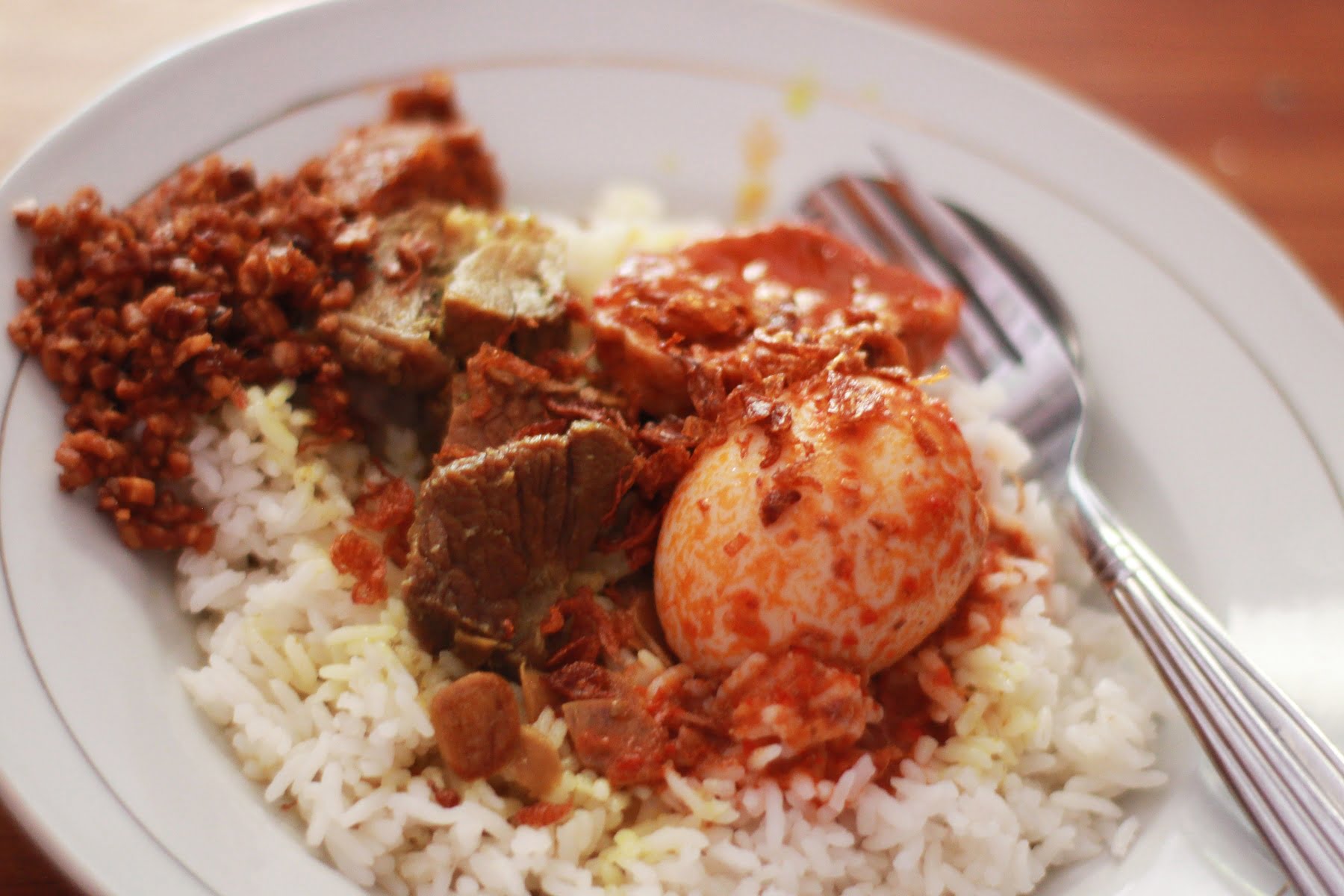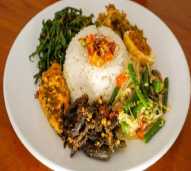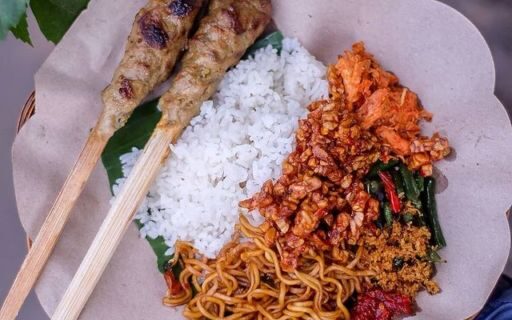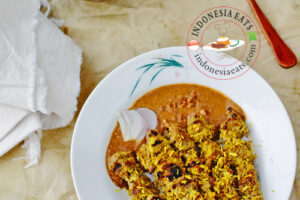Nasi campur, a beloved Indonesian and Malay dish, is more than just a meal—it’s a cultural expression that reflects the rich diversity of Southeast Asian cuisine. Known as “mixed rice” in Indonesian and Malay, this dish is a staple across Indonesia, Malaysia, Singapore, Brunei, and even parts of Thailand and the Netherlands. With its roots deeply embedded in the region’s culinary traditions, nasi campur offers a unique blend of flavors and textures that have captivated food lovers for generations.
At its core, nasi campur consists of steamed white rice accompanied by an assortment of side dishes, including meats, vegetables, peanuts, eggs, and fried-shrimp krupuk. This concept has parallels across Asia and the Pacific, such as khao kaeng in Thailand, cơm bình dân in Vietnam, and the plate lunch in Hawaii. However, in the Indonesian and Malay-speaking regions, the term “nasi campur” is the most widely recognized name for this style of meal.
Origins and Cultural Significance
The origins of nasi campur are as diverse as the regions it spans. While there is no single recipe or definition, the dish is commonly perceived as steamed rice surrounded by various dishes, served in personal portions. Unlike tumpeng, which is served in larger collective portions, or rijsttafel, which was presented in lavish colonial banquets, nasi campur is a more intimate and accessible meal.
In Indonesia, nasi campur refers to any kind of rice surrounded by various dishes, while in Malaysia and Brunei, it commonly refers to Malay mixed rice. The term can also encompass non-Malay versions like Nasi campur Cina (Chinese-style nasi campur), nasi campur Orang Ulu, and nasi campur Iban. In Japan, the United States, and most foreign countries, nasi campur often refers to the Balinese version, while in the Netherlands, it most often refers to Indo-colonial nasi rames.
Regional Variations and Local Flavors

One of the most fascinating aspects of nasi campur is its regional variations. From Java to Bali, from the Malay Peninsula to Borneo, each area has developed its own unique take on this dish. For example, in Bali, the mixed rice, called nasi campur Bali or simply nasi Bali, is a favorite among tourists. This Balinese version is known for its use of basa genep, a typical Balinese spice mix used as the base for many curry and vegetable dishes. It may include grilled tuna, fried tofu, cucumber, spinach, tempeh, beef cubes, vegetable curry, corn, and chili sauce on the bed of rice.
In Java, nasi campur is often called nasi rames, and one dish that is usually found in a Javanese nasi campur is fried noodles. The combination known as nasi rames was created in West Java during World War II by the Indo (Eurasian) cook, Truus van der Capellen, who ran the Bandung soup kitchens during (and after) the Japanese occupation. Later, she opened a restaurant in the Netherlands and made the dish equally popular there.

In the Minangkabau region of Indonesia, nasi Padang is a quintessential dish of Minangkabau food culture. It consists of steamed rice accompanied by a variety of pre-cooked dishes, including meats, fish, vegetables, and spicy sambals. Nasi Kapau, a related dish from Nagari Kapau in Bukittinggi, is often described as the Minangkabau version of mixed rice.

In Malaysia and Brunei, the Malay nasi campur is the most prevalent version. It typically features a base of steamed white rice accompanied by a diverse selection of side dishes, such as curries, grilled meats, vegetables, and sambals. The dishes found in a typical Malay nasi campur are known for their bold and aromatic flavors, achieved through the use of traditional spices and herbs.

The Role of Nasi Campur in Daily Life
Nasi campur is not just a meal; it is a way of life for many in Southeast Asia. It is a staple meal that is enjoyed by people of all backgrounds, from street vendors to high-end restaurants. In many communities, nasi campur is served in a casual, self-service manner, allowing diners to build their plates from a buffet-like display, creating a balanced meal in a single serving.
In the Chinese Indonesian community, nasi campur Tionghoa refers to a combo set menu of various Chinese barbecued meats, such as char siew, crispy roast pork, sweet pork sausage, and pork satay. This dish is usually served with simple Chinese chicken soup or sayur asin, an Indonesian clear broth of pork bones with fermented mustard greens.
Conclusion
Nasi campur is a testament to the rich culinary heritage of Southeast Asia. Its versatility, adaptability, and ability to reflect local culture make it a dish that transcends borders. Whether you’re enjoying a simple bowl of nasi campur in a small warung or a lavish feast in a fine dining restaurant, the experience is always memorable. As we continue to explore the world’s cuisines, nasi campur remains a shining example of how food can bring people together and celebrate the diversity of our global community.






